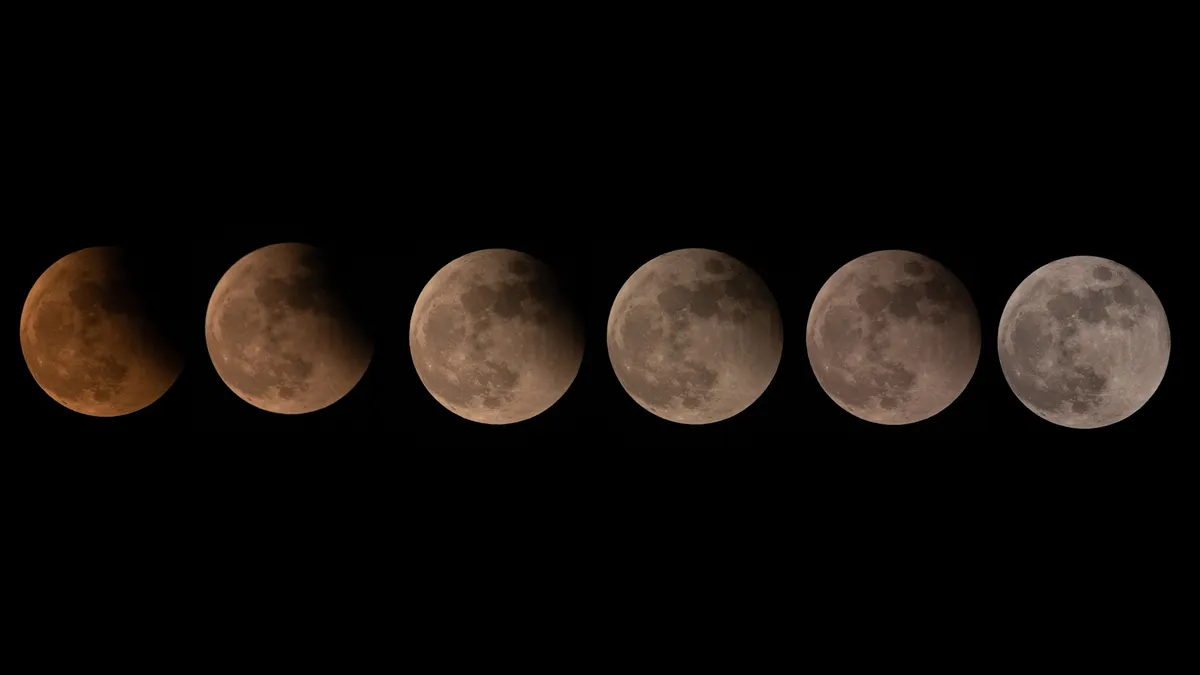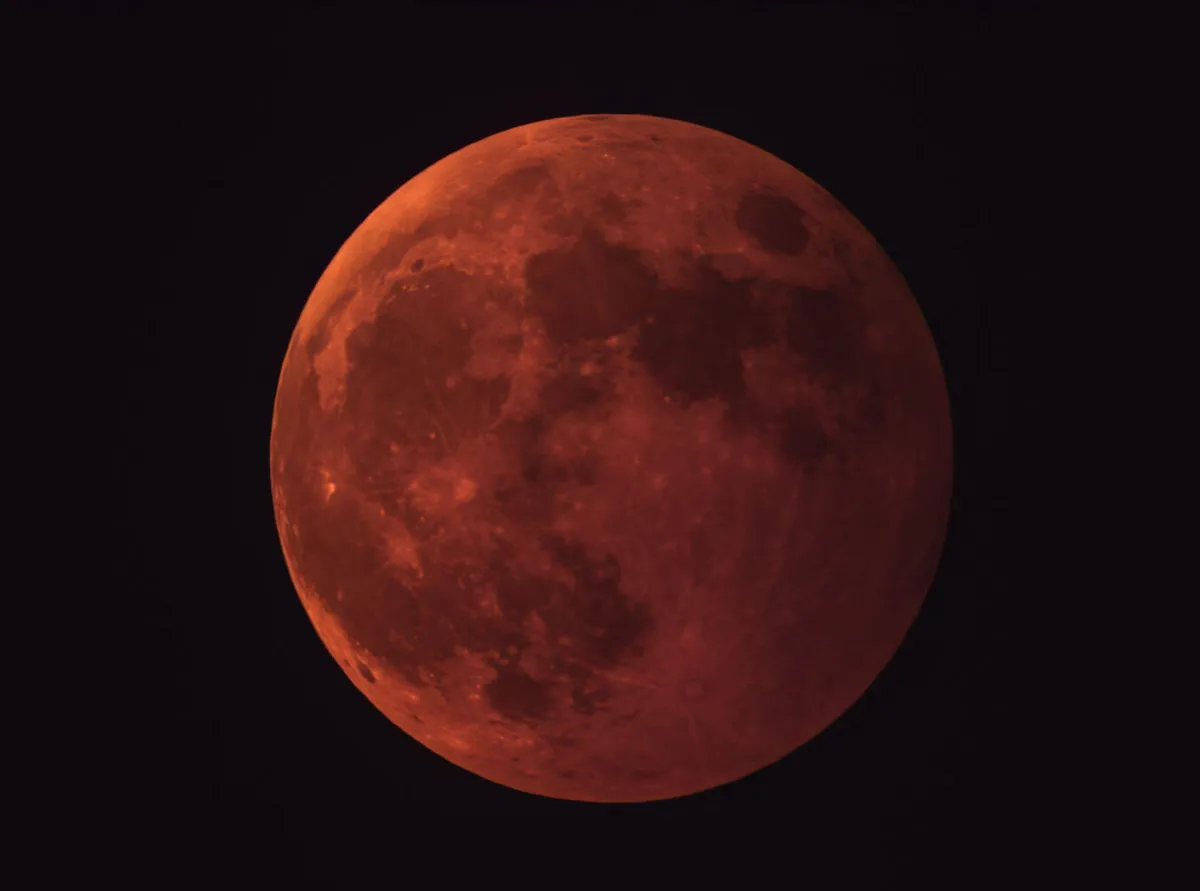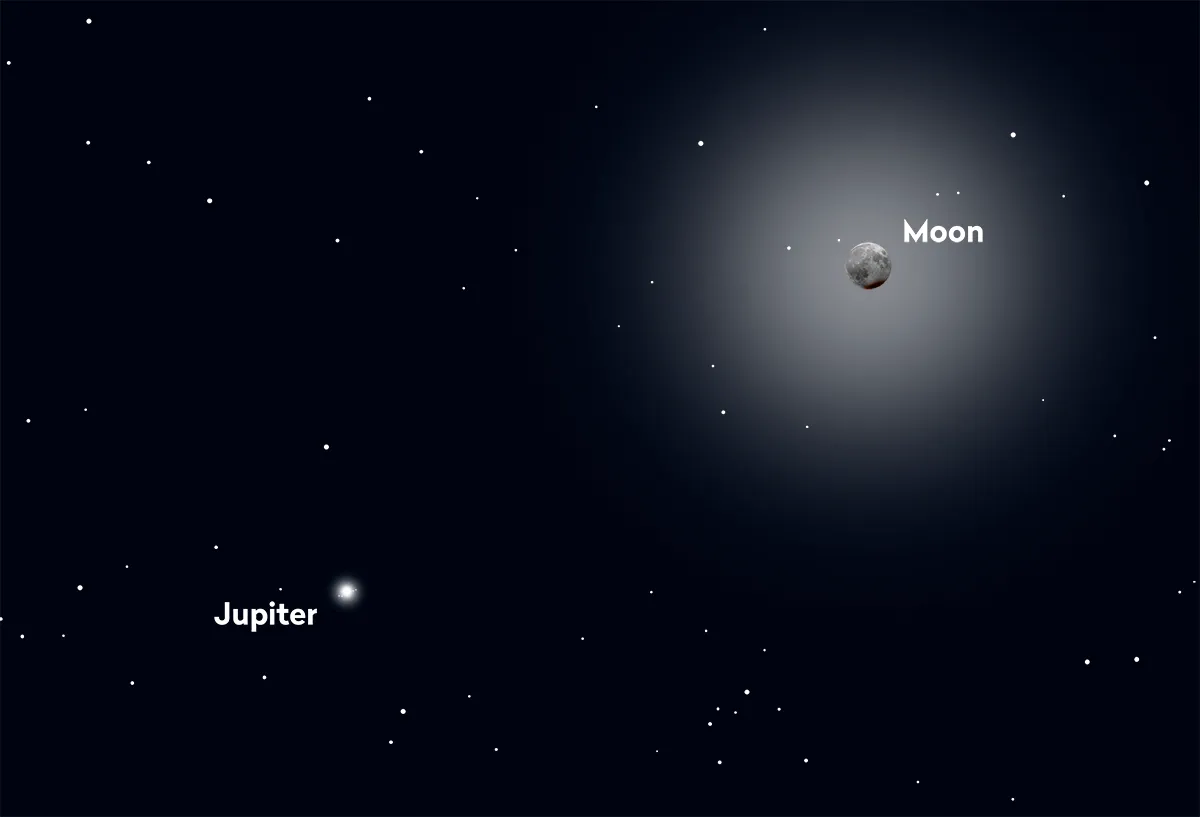Would you like to see Earth's shadow take a bite out of the Moon? That's what you'll see this weekend during the 28 October partial lunar eclipse.
UK and Europe observers will be treated to a partial lunar eclipse on Saturday evening, which will show part of the Moon clipped by Earth’s dark umbral shadow.
For UK and Europe eclipse chasers, this weekend's lunar eclipse will be a welcome sight and one of the naked-eye highlights of the 2023 astronomical calendar.
After all, eclipse-chasers in the UK and mainland Europe haven't had much to get excited about on their home turf this year!
Read our guide and find out when the next eclipse is taking place and how to photograph the event
The hybrid solar eclipse of 20 April was only visible over a narrow path around Indonesia and Australia.
The recent partial solar eclipse on October 14 was restricted to observers in North America and South America.
However, there is a glimmer of relief in the shape of a this weekend's partial lunar eclipse visible over the UK, Ireland and mainland Europe.
The 28 October partial lunar eclipse will also be visible over much of Africa, the Middle East and Asia, but will only be visible in the eastern Americas during Moonrise, and in western Australia during Moonset.

What will we see?
This will be a small partial lunar eclipse, meaning only a relatively narrow portion of the Moon will be subject to darkening caused by Earth's shadow passing over its surface.
You can see the extreme southern part of the Moon clipped by Earth’s dark, umbral shadow between 20:35-21:53 BST (19:35-20:53 UT).
As an added bonus, this autumnal lunar eclipse will occur in the evening.
It will also be accompanied by the planet Jupiter in the night sky, making for a great observing and imaging opportunity.
What is a lunar eclipse?

A lunar eclipse occurs as Earth passes between the Sun and the Moon, blocking sunlight passing to the lunar surface.
This causes a darkening and change of colour on the surface of the Moon.
Any sunlight that does sneak past Earth and hit the lunar surface is refracted by our planet's atmosphere.
This is what causes the rusty red colour seen during a total lunar eclipse.
This refraction of sunlight is indicated by the bent line in the above illustration.

As the Sun’s rays intercept Earth, it causes two different zones of shadow to form:
- Penumbra, where some of the Sun is always seen
- Umbra, where the Sun is completely hidden by Earth
During a total lunar eclipse the entire Moon will appear red, but during a partial eclipse just a portion will appear red.

Video: How to see a lunar eclipse
28 October lunar eclipse timings
During the 28 October partial lunar eclipse, the penumbral stage will occur for 4 hours 24 minutes.
The umbral stage will occur for 1 hour 17 minutes, and this is the stage that you want to observe.
Key timings listed below:
- Penumbral eclipse starts at 19:02 BST (18:02 UTC)
- Partial umbral eclipse starts at 20:35 BST (19:35 UTC)
- Greatest eclipse is at 21:14 BST (20:14 UTC)
- Partial umbral eclipse ends at 21:53 BST (20:52 UTC)
- Penumbral eclipse ends at 23:26 BST (22:26 UTC)

For more detail, you can read our guide to the 28 October lunar eclipse key times.
Greatest eclipse magnitude will be 12.2% and just 6% of the Moon's surface will be covered by the Moon's umbra during greatest eclipse.
Keep an eye on your timings, because the effect will be quite subtle, and this will help you discern the change in the Moon's appearance.
For subtle eclipses such as this, it's of great advantage that scientists can predict when the next eclipse will happen.
Capturing multiple shots of the Moon before, during and after the eclipse using a DSLR camera on a tripod is a good way of recording the changes.
This enables you ton compare the Moon's appearance during the event more easily.
For more advice, read our guide on how to photograph the Moon.
Observing the lunar eclipse with children

The October lunar eclipse won’t be dramatic: just a small portion of the Moon will be covered by Earth’s shadow.
It's not necessarily going to be a great event for kids to observe as the changes will be quite subtle.
It is, however, an early evening event, which is one advantage when taking young astronomers into account.
A great way to experience the lunar eclipse with kids is to suggest making a drawing of the Moon, say at 20:00 BST (19:00 UT), then at 21:14 BST (20:14 UT), which is the point of greatest eclipse.
The two drawings can be compared to show how the eclipse changed the appearance of the Moon.
The eclipse occurs between 20:35 and 21:52 BST (19:35–20:52 UT).
For more advice, read our guide to stargazing with kids and how to draw the Moon.
And if you do manage to observe photograph or sketch this lunar eclipse, be sure to send us your images.
